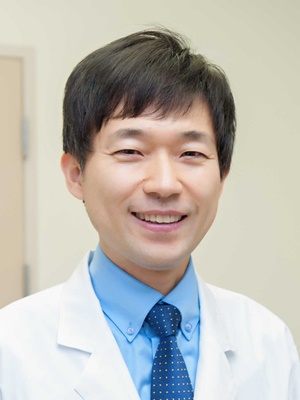-
- Global AMC MENU
- NEWS
- HEALTH
- PEOPLE
- Introduction

▲ Professor Dong-Wha Kang, Department of Neurology at Asan Medical Center
Visual field defects following stroke occur in approximately 20% of patients. However, no treatment has been available so far. The world’s first digital therapeutic device to improve visual field defects after stroke, developed by a research team led by Professor Dong-Wha Kang of the Department of Neurology at Asan Medical Center, has recently obtained marketing authorization from the Ministry of Food and Drug Safety (MFDS).
The research team collaborated with interdisciplinary researchers in neuroscience, software development, and mathematics to develop a digital device called ‘VIVID Brain.’ Patient-customized visual perception training/learning is implemented as a VR (virtual reality)-based mobile app, allowing treatment to be conducted anytime, anywhere through a training algorithm designed for a 12-week program. Additionally, remote monitoring is available for continuous management.
Furthermore, another approval was obtained from the MFDS for ‘NNS-SOT,’ an artificial intelligence (AI) software for estimating the onset of cerebral infarction, developed by Professor Dong-Wha Kang with Professor Eun-Jae Lee. NNS-SOT is a software that estimates the onset time of cerebral infarction using brain MRI images. It was created using approximately 4,000 cases of brain images collected through multi-center clinical trials and optimized deep learning techniques. The software is expected to provide new treatment opportunities for patients with hyperacute stroke.












